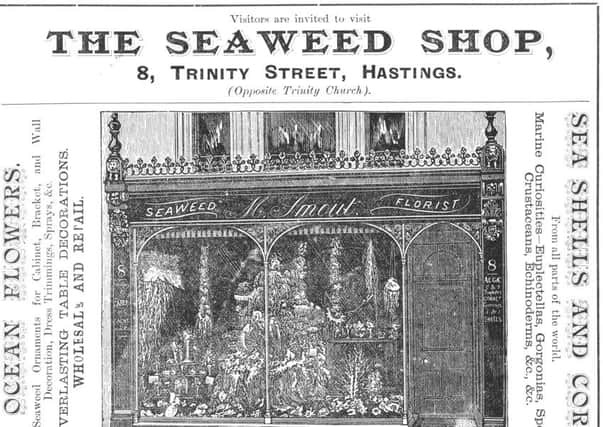Emergence of a high class shopping street


We know that of His Majesty’s Commissioners of Woods Forests and Land Revenues had decided in 1828 that the Crown was the owner of the ‘America Ground’ and then granted 7 year leases to the inhabitants’ so that by Christmas 1835 the ground had been cleared and was standing empty, becoming known as the `Derelict’ or `Waste Lands` until 1849 when Patrick Francis Robertson real estate developer and MP for Hastings leased the crown lands for 99 years at a rate of £500 per annum. By the following year work had started on building the road that bears his name - Robertson Street which was originally built as high-class accommodation but less than a decade had passed before the ground floors of the fine houses had been transformed into shops, high class shops selling expensive goods to the upper echelons of Hastings society and earning itself the epithet “Hastings’ Regent Street”, an accolade it was to enjoy for the next century. As an aside, it’s interesting to note that Robertson Street actually ends at Andrews Estate Agents, which, in its original incarnation, would have looked out onto ‘The Memorial’ and the first building on Cambridge Road, also originally private housing, is stepped back and north of the block incorporating the former Public Hall, now Yates’ pub. Robertson street is also unusual in its premises numbering, rather than the convention of numbering odd numbers on one side of the road, evens on the other the numbering in Robertson Street runs sequentially from No 1, Debenhams to the seafront and then back down the other side of the road to Andrews and includes Holy Trinity Church which was designed by the Architect Teulon and occupies most of the centre of the Trinity Triangle. The building was opened in 1858 and is bounded on three sides by Robertson Street, Trinity Street and Claremont.
Many of the advertisements illustrated here featured in ‘Parsons Hastings St.Leonards and Neighbourhood Illustrated’ published around 1890, with Parsons’ offices and works in Claremont they would not have had to go far to canvass the shop owners.
Advertisement
Hide AdAdvertisement
Hide Ad